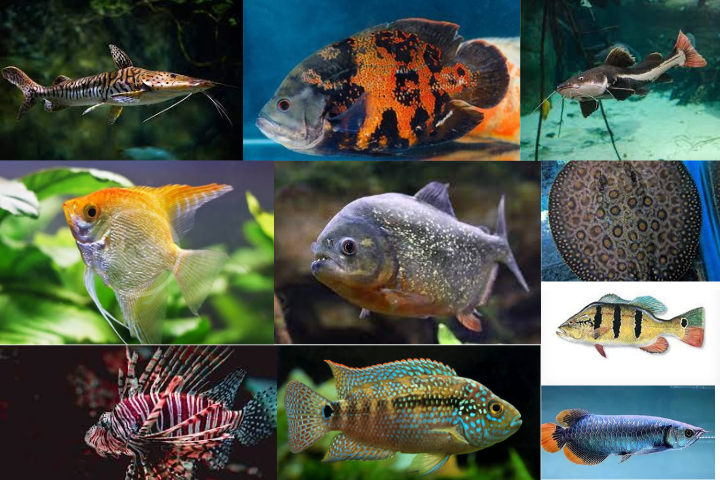Predator fish can bring an exciting edge to your aquarium, transforming it from a simple fish tank to a dynamic ecosystem. Whether you’re a beginner looking to start with a manageable species or an experienced hobbyist planning your dream tank, choosing the right predator fish for your aquarium is key to success. In this guide, we’ll dive into the Top 10 predator fish for aquarium setups, explore species for all tank sizes, and share care tips to keep your fish healthy and thriving. Ready to turn your aquarium into an exciting underwater world?
What Makes a Fish a Predator in an Aquarium?
Predator fish are different from other aquarium fish. They hunt and eat other fish or small creatures. Think of them like lions in the wild. They have strong instincts to catch food. In your tank, these fish behave the same way—they are hunters.
Predatory fish for tanks need space, the right care, and careful tank mate choices. Most are bigger than regular fish. They also have sharp teeth and often act aggressively. These traits help them hunt. But don’t worry—if you know what to look for, you can create a great home for them.
When choosing the best predator fish for the aquarium, look at three things: size, temperament, and feeding habits. These traits define what makes a fish a predator. If you understand these, you’ll be able to choose the best fish for your tank and create a thriving, exciting environment.
Top 10 Predator Fish for Aquarium
If you’re thinking about adding a predator fish to your aquarium, you’re in for a treat. These fish bring action and excitement to your tank. They turn your home aquarium into a dynamic, living ecosystem. But before you dive in, it’s important to choose the right species. Not all predator fish are the same, and some are better suited for beginners than others. So, let’s take a look at the Top 10 predator fish for aquarium setups, focusing on manageable species that are easy to care for, along with tank setup tips.
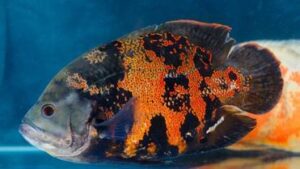
1. Oscar Fish
Oscar fish are one of the best predator fish for aquariums—especially for beginners. They are hardy, easy to care for, and can be quite interactive. Oscars are aggressive hunters but not overly difficult to handle. A 55-gallon tank or larger will be perfect for them. They do well with other fish that aren’t too small, so it’s important to choose compatible tankmates.
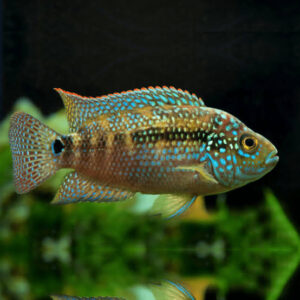
2. Jack Dempsey
The Jack Dempsey is another beginner-friendly predator fish. Known for its territorial nature, it requires a bit of space to thrive. This fish can grow to be quite large, so make sure you have a 75-gallon tank or bigger. Keep in mind, they might be a little feisty at feeding time. This species does best with other fish that are similar in size.
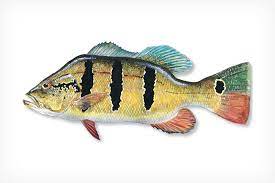
3. Peacock Bass
For those with a larger tank (around 100 gallons), the Peacock Bass makes an exciting addition. These fish are known for their striking colors and hunting skills. They’re often found in freshwater environments and love having plenty of room to swim. When setting up their tank, include hiding spots and lots of space for swimming.
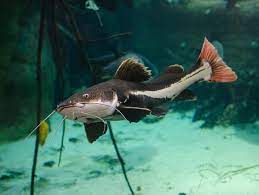
4. Redtail Catfish
While the Redtail Catfish is a stunning fish, it requires a lot of space. Ideally, this fish should be housed in a 100-gallon or larger tank. They’re active hunters and can grow to impressive sizes. If you have the room, this fish can be a fascinating and impressive predator to care for.
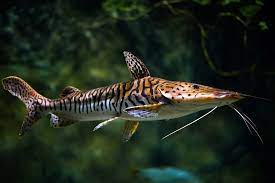
5. Tiger Shovelnose Catfish
This fish is known for its unique appearance and large size. With the right care, the Tiger Shovelnose Catfish can be one of the best predatory fish for 100-gallon aquarium setups. These fish are relatively peaceful for a predator, making them an ideal choice for those with larger tanks and other suitable fish.
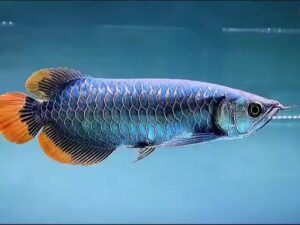
6. Arowana
Arowanas are beautiful, large predator fish that are best suited for larger aquariums (at least 120 gallons). They can grow up to 3 feet long, so make sure you have plenty of space. They hunt by jumping, which is a fascinating behavior to observe. Keep in mind that Arowanas can be picky about tankmates—avoid small or slow-moving fish.
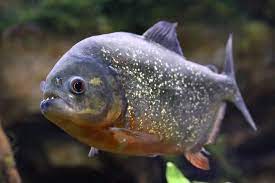
7. Piranha
Piranhas are often considered one of the most dangerous aquarium fish, and they certainly live up to their reputation. However, they can be kept safely in a well-maintained tank. A 75-gallon tank is recommended, with a tight-fitting lid. Be cautious when choosing tankmates, as Piranhas can be aggressive and are best kept with other large, robust species.
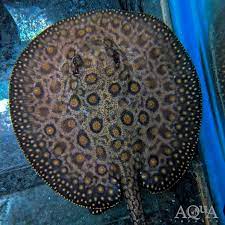
8. Motoro Stingray
For a unique and graceful predator, consider the Motoro Stingray. This species is a large freshwater ray that needs plenty of room to glide and hunt. They require at least a 200-gallon tank and do well in soft, sandy substrates. Due to their size and care requirements, this species is better suited for more experienced hobbyists.

9. Freshwater Angelfish
If you’re looking for a more peaceful predator, the Freshwater Angelfish is a great choice. While they are predators, they tend to be less aggressive compared to others on this list. They’re ideal for smaller aquariums (about 30 gallons) and can live alongside other peaceful species. These fish hunt smaller creatures but are generally calm in the right environment.
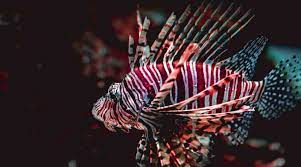
10. Lionfish
If you’re ready to venture into saltwater, the Lionfish is one of the most stunning and exciting predator fish. Their venomous spines and unique hunting behavior make them a showstopper. However, they require a 75-gallon tank or larger and specific care, like maintaining proper salinity and water temperature. They do well with larger fish that won’t pick on them, but smaller fish are a definite no-go.
Best Predator Fish for Beginners
If you want a cool fish for your aquarium, a predator fish could be a great choice. They are fun to watch and easy to take care of. Let’s look at some of the best predator fish for beginners. These fish are hardy and won’t cause too much trouble in your tank.
1. Oscar Fish: The Friendly Hunter
The Oscar is a perfect choice for beginners. They are big, friendly, and easy to care for. Oscars can be a bit aggressive, but they are not too wild. They are great for a tank that is at least 55 gallons. Just make sure you don’t add small fish that they might try to eat.
2. Jack Dempsey: Tough but Easy
The Jack Dempsey is a strong fish, but it’s also easy to care for. They are perfect for a 75-gallon tank. These fish are best with others that are similar in size. They can be mean to smaller fish, so keep that in mind. If you set up your tank right, they will do well.
3. Peacock Bass: The Showstopper
The Peacock Bass is a beautiful fish. It has bright colors and is fun to watch. It needs a large tank, about 100 gallons. If you give it plenty of space and hideouts, it will do great. Watching them hunt is really exciting.
Most Dangerous Aquarium Fish
When it comes to dangerous aquarium fish, some species definitely stand out. These fish might look beautiful or intriguing, but they can also be tricky to handle. Let’s take a look at some of the most dangerous fish you might find in 2025.
Piranha: The Fearsome Predator
Piranhas are famous for their sharp teeth and aggressive nature. While they can be dangerous, they aren’t as deadly as the movies often show. In an aquarium, they can be kept safely, but you need a tank large enough to keep them comfortable. A 75-gallon tank is a good starting point for a group. With the right care, these fish can thrive, but be cautious with smaller tankmates—piranhas are hunters at heart.
Red-Bellied Pacu: The Terrifying Look-Alike
At first glance, the Red-bellied Pacu looks like a Piranha, but it’s actually a bit calmer. Still, this fish can be dangerous due to its size and sharp teeth. It can grow large, so make sure you have a 75-gallon tank or bigger. They can also be territorial, especially when feeding. While not as aggressive as Piranhas, it’s important to keep them with similarly sized tankmates.
Lionfish: Beauty with a Bite
The Lionfish is stunning with its long, venomous spines. Although they are not naturally aggressive, their venom can cause serious harm if touched. These fish need a tank of at least 75 gallons and should be kept with larger species to avoid any issues. Due to their venom, it’s crucial to handle them with care and ensure your tank setup is appropriate for them.
Why Careful Planning Is Key
The truth is, keeping any of these dangerous fish requires careful planning. With the right tank setup, size, and knowledge, they can be safely housed. However, always do your research and understand their needs before bringing them into your home aquarium. These fish may be dangerous, but with proper care, they can add excitement to your tank.
Freshwater vs. Saltwater Predator Fish: Which is Right for You?
When deciding between freshwater and saltwater predator fish, it’s important to weigh the differences. Both offer unique benefits, but your experience level and tank setup will guide your decision.
Freshwater Predator Fish
Freshwater predator fish are generally easier to care for and better suited for beginners. They are hardy and can handle a range of tank conditions, making them perfect for smaller tanks or novice hobbyists. Fish like the Oscar or Jack Dempsey thrive in tanks ranging from 55 to 75 gallons.
These fish are adaptable and can be forgiving when it comes to water quality, making them a great fit for “Top 10 predator fish for aquarium” lists. Freshwater tanks are also easier to maintain, so they’re a great choice for those new to the hobby.
Saltwater Predator Fish
Saltwater predator fish, like the Lionfish, are visually stunning but more challenging to care for. They require stable water conditions, including precise temperature and salinity levels. Tanks for saltwater fish often need to be larger, usually starting at 75 gallons or more.
Though saltwater fish demand more attention and expertise, they’re a beautiful addition to any tank and are well worth the effort for experienced aquarium owners.
Which is Best for You?
If you’re just starting out, freshwater predator fish for tanks are likely the better choice. They’re easier to maintain and are great for beginners. However, if you’re ready for a challenge and want a breathtaking fish to showcase, saltwater predator fish might be the perfect option for your next aquarium adventure.
Choosing the Best Predator Fish for Aquarium
Choosing a predator fish for your tank is exciting. But it’s important to make the right choice. Here’s a step-by-step guide to help you pick the best fish for your aquarium in 2025.
Step 1: Check the Size of Your Tank
Before choosing a predator fish, check how big your tank is. Bigger fish need more space. If your tank is small, pick a smaller predator, like an Oscar fish. Larger fish, like an Arowana, need bigger tanks. A tank that holds at least 55 gallons works best for most predators.
Step 2: Learn About the Fish’s Behavior
Different predator fish behave in different ways. Some are calm, while others are very aggressive. For example, Oscars are less aggressive than Piranhas. If you want a peaceful tank, choose fish that get along well with others. Check online guides to find out more about the behavior of your fish.
Step 3: Choose the Right Tankmates
Your predator fish will need tankmates. But not all fish can live together. Some predator fish like to hunt and may eat smaller fish. Pick tankmates that are too big to be eaten. You can also pick fish that are as tough as your predator. Look for advice on compatible tankmates before you add them.
Step 4: Consider Your Experience
Are you new to fishkeeping? Or are you an expert? If you’re a beginner, pick easy-to-care-for fish, like an Oscar. These fish are tough and don’t need special care. If you have more experience, you can try harder fish, like Piranhas or Lionfish. These require special care and a big tank.
Step 5: Check Their Diet
Most predator fish eat meat. They need live food or frozen food, like small fish, worms, or shrimp. Some fish, like Oscars, like to eat live fish. Others, like Piranhas, need a steady supply of protein. Make sure you can give your predator fish the right food before you get one.
Step 6: Plan for Long-Term Care
Predator fish grow fast. They need bigger tanks as they get older. For example, a Redtail Catfish can grow over 3 feet long. You may need to upgrade your tank later. Be ready to take care of your fish for a long time.
Step 7: Think About the Look of Your Tank
Predator fish are beautiful. They can be the star of your tank. Fish like the Peacock Bass and Lionfish have bright colors and striking features. Make sure your fish’s look fits with your tank’s setup. You can use rocks and plants to make your tank look even better.
Step 8: Double-Check Care Requirements
Each predator fish has different care needs. Check the water temperature, pH, and other needs for the species you choose. You can find care tips online to help you keep your fish healthy.
Step 9: Get the Right Equipment
Predator fish make more waste than other fish. You need a strong filter to keep the water clean. Make sure your tank has the right filter and air pump. This will keep the water healthy for your fish.
Conclusion
Selecting the Top 10 predator fish for aquarium setups involves careful consideration of tank size, species behavior, and compatibility with other fish. By understanding what makes a fish a predator, focusing on manageable species for beginners, and choosing the right environment and tankmates, you can create an exciting and thriving aquarium. Predator fish add a dynamic edge to your aquarium, but with proper care and planning, they can flourish and provide a captivating centerpiece for your home.
